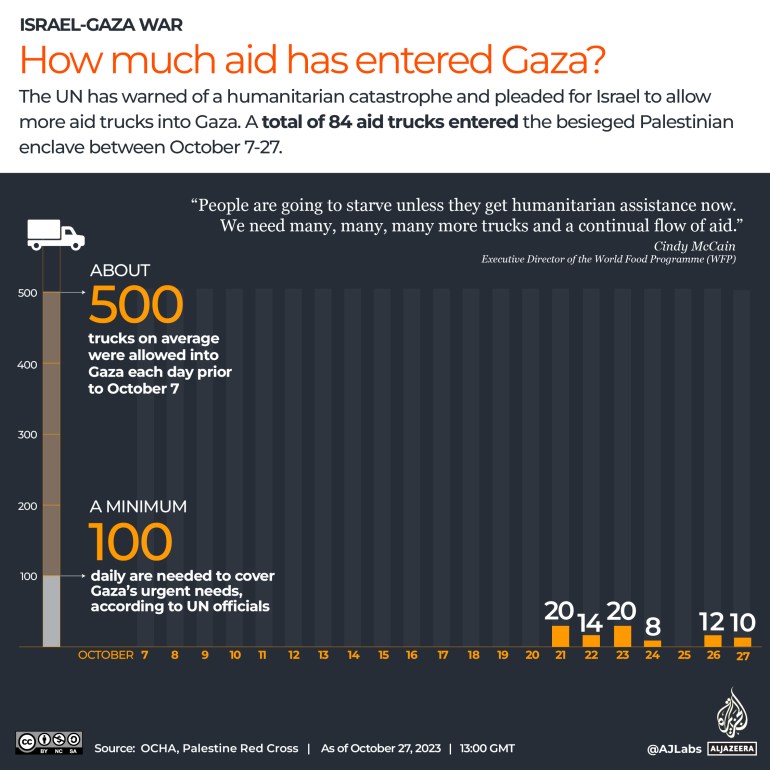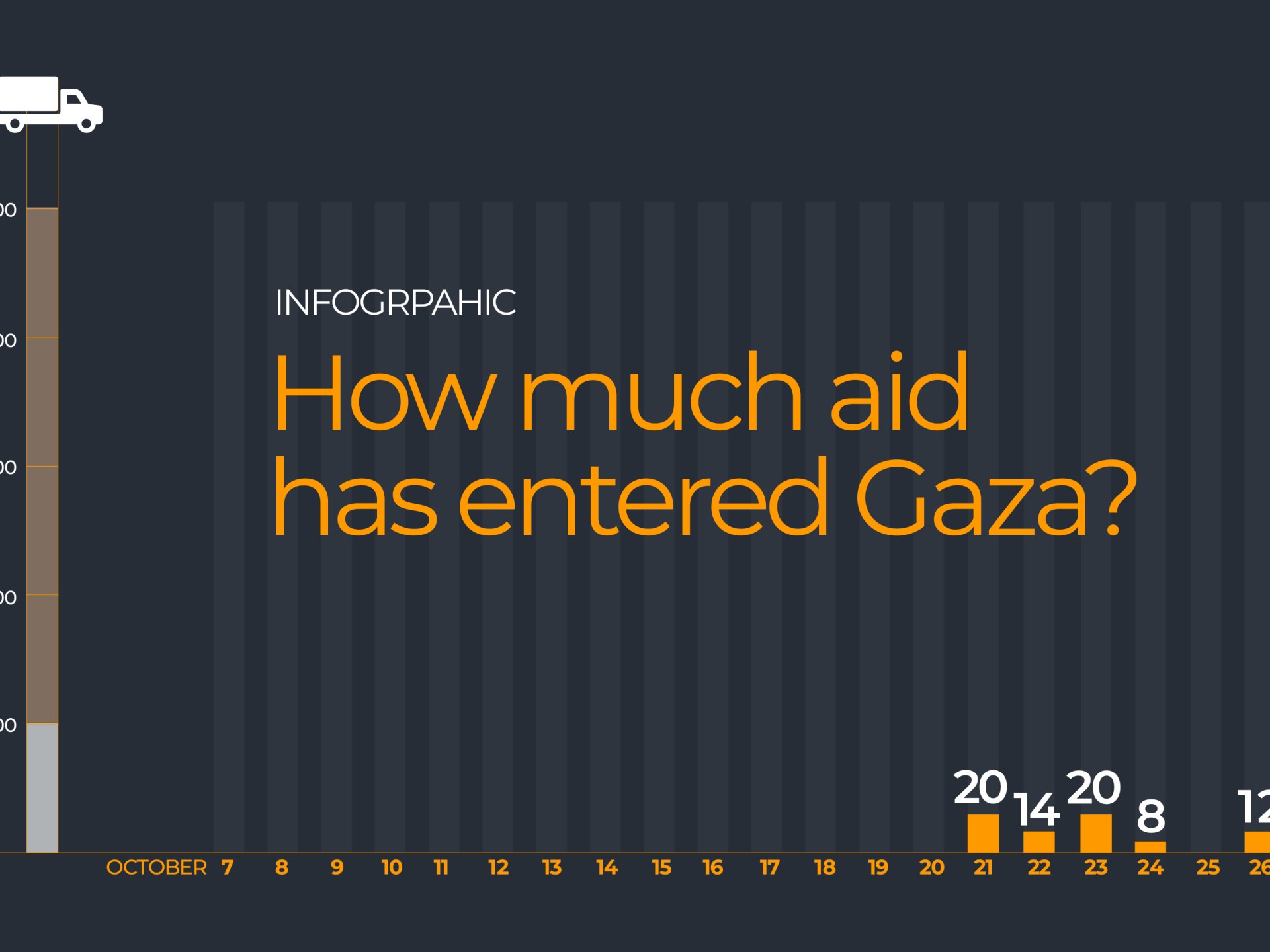People in the Gaza Strip are going hungry as they face a dire humanitarian situation.
Shortages of medical supplies, food, drinking water and electricity have left 2.3 million Gaza Palestinians at risk of starvation and disease following Israel’s total blockade of the Strip in the wake of attacks by Hamas on October 7.
“Gaza is struggling with a lack of basic supplies. Food and water are running out. People are facing increasingly desperate conditions,” says Abeer Etefa, a World Food Programme (WFP) spokesperson. “Outside Gaza, conditions in the West Bank are decreasing every day.”
How much aid has entered Gaza?
So far, only 84 trucks of aid have crossed into Gaza through Rafah since October 21, due to the crossing being closed after the start of the conflict, as Israel repeatedly bombed it.
PRCS teams received 10 trucks loaded with humanitarian aid through the Rafah crossing today. Six trucks of them was delivered to the ICRC which were sent to them, and four trucks from the Egyptian Red Crescent to the Palestine Red Crescent.
The trucks contain food, medicines,… pic.twitter.com/gPzytRsvOH
— PRCS (@PalestineRCS) October 27, 2023
Before October 7, nearly 500 trucks of aid were delivered to people in the besieged enclave daily.
The aid entering now does not include fuel, which was banned by Israel, needed to power hospitals, water and sewage works, and generate electricity.
“People are going to starve unless they get humanitarian assistance now. We need many, many, many more trucks and a continual flow of aid,” Cindy McCain, executive director of the WFP, said.

How much aid needs to enter Gaza?
The WFP has said 141 tonnes of food supplies, including canned fish and sunflower oil, have crossed into Gaza on those 74 trucks since the opening of the Rafah crossing on October 21.
For aid to reach the 1.1 million Palestinians who were told by Israel to evacuate from the north of Gaza to the south, operations need to be scaled up, with at least 40 trucks carrying food supplies into Gaza daily, the WFP has said.
What provisions are in place by the WFP?
For every person who has received WFP food assistance, at least six more are in need.
There are 40 loaded trucks, waiting near the Egyptian border with Gaza, and another 930 tonnes of food stockpiled.
The food on the trucks includes canned fish and food parcels containing pasta, wheat flour, canned tomato paste and canned beans.
The WFP has provided emergency food and cash assistance to more than 628,500 people across Gaza and the occupied West Bank.
Of these beneficiaries, about 475,000 displaced people in United Nations-designated shelters received canned tuna, and fresh bread through WFP-contracted bakeries.
Overall, close to a quarter of a million people in Gaza have redeemed this voucher assistance in shops since October 7.
The bread supply in Gaza is running short due to a lack of fuel and electricity. Of the five flour mills in the Gaza Strip, only one mill is operating.
The WFP was relying on 23 bakeries to feed 220,000 people a day. Today, only two bakeries are able to work. They are producing at six times their normal capacity.
The situation before the blockade
Before the Hamas attack on October 7, nearly one-third of the population of Palestine – 33.6 percent, or 1.84 million people – was food insecure, according to the WFP.
Food insecurity is particularly high among women, especially in the Gaza Strip, where 63.3 percent of female-headed households suffer food insecurity.
After the October 7 attacks, Israel cut off its water pipeline to Gaza – along with the fuel and electricity provisions that power water and sewage plants.
UN agencies have warned the collapse of water and sanitation services will spark bouts of cholera and other deadly infectious diseases if urgent humanitarian aid is not delivered.
Sumber: www.aljazeera.com
 Skip to content
Skip to content

